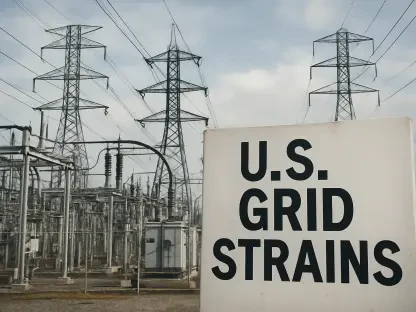The United States Environmental Protection Agency (EPA) has recently announced new measures aimed at addressing the nation’s growing concern over Per- and Polyfluoroalkyl substances (PFAS). Known for their persistent nature and potential health risks, PFAS have become a significant environmental challenge, demanding a proactive approach from regulatory bodies. As part of this commitment, the EPA is strengthening its focus on polluter accountability and appointing a leader specifically tasked with managing PFAS issues. Under the guidance of EPA head Lee Zeldin, appointed in January of this year, the strategy reflects continuity from previous administrations with an emphasis on advancing the methods used to mitigate PFAS contamination. This initiative is nested within the broader PGAC program—a federal strategy aimed at safeguarding natural resources while fostering economic growth.
EPA’s Comprehensive Strategy
The new measures under the PGAC initiative articulate a multifaceted attempt to tame the threat posed by PFAS, focusing on enhancing environmental policies while ensuring economic stability. Central to this plan is the EPA’s commitment to accountability principles and enforcement alongside legislative frameworks tailored to meet the unique challenges of PFAS. The agency introduces new effluent limitations guidelines (ELGs) and a strategic PFAS testing protocol under the Toxic Substances Control Act (TSCA). These frameworks are set to improve the accuracy and reliability of PFAS detection and evaluation, enabling targeted clean-up efforts.
A significant aspect of the EPA’s approach involves building partnerships with Congress, industry stakeholders, and state-level entities, fostering a cooperative federalism model that supports cross-agency collaboration. This cooperative model is crucial to constructing a transparent liability system, one that places the financial and operational responsibilities squarely on the shoulders of the polluters, rather than consumers. Zeldin’s administration emphasizes the importance of balancing public health priorities against industrial growth, aligning with national goals of clean air, land, and water for every American.
Implementation Challenges and Opportunities
While the EPA’s new measures show promise, there remain substantial challenges and opportunities in tackling PFAS contamination effectively. From logistical hurdles in implementing standardized testing under TSCA to evaluating emissions assessments, these initiatives necessitate a highly coordinated response. With the appointment of a dedicated agency lead focusing solely on PFAS management, the agency signifies a sharpened focus on solving these complexities through enhanced scientific scrutiny and technological solutions.
The introduction of comprehensive guidelines for air-related emissions and the regular update of PFAS destruction and disposal protocol underscore the importance of maintaining a forward-facing strategy. As these efforts unfold, the EPA aims to ensure that the measures are scalable, adaptable, and responsive to emerging scientific data and technological advancements, without one-size-fits-all solutions. The evolving landscape requires constant dialogue between stakeholders, including public engagement through biosolid risk assessment consultations.
The Future Roadmap
The timing of these initiatives under the leadership of Lee Zeldin reflects a strategic pivot from merely identifying PFAS occurrences to constructing a deep understanding of its lifecycle impacts. Such evolution underscores an insightful trajectory from the policy introductions in previous years to the current actionable outcomes for safeguarding public health. This forward-moving stance is buoyed by bipartisan support, showcasing a unified commitment towards eradicating PFAS from drinking water systems—an issue that has seen increasing public and political attention due to its hazardous implications.
The agency’s efforts represent a synthesis of historical measures initiated in previous years like the National Drinking Water Standard and PFAS Action Plans. Zeldin’s experience in advocating for stringent environmental protocols now serves as a cornerstone for sustainable policy-making that resonates across party lines. The EPA’s initiatives are set to provide a conducive framework for continued research, prevention, and policy reform, ensuring a resilient approach to environmental governance through direct actions and partnerships across sectors.
A Collective Path Forward
The PGAC initiative introduces comprehensive measures to tackle the challenges posed by PFAS, emphasizing the need to strengthen environmental policies while maintaining economic stability. At the core of this initiative is the EPA’s dedication to accountability and enforcement combined with legislative frameworks designed to address PFAS’s unique issues. The agency unveils new effluent limitations guidelines and a strategic testing protocol for PFAS under the Toxic Substances Control Act. This aims to enhance the precision and dependability of PFAS detection, facilitating targeted clean-up operations.
A pivotal component of the EPA’s strategy is establishing partnerships with Congress, industry players, and state agencies, promoting a cooperative federalism model that encourages cross-agency collaboration. This approach is vital for developing a transparent liability system, ensuring that polluters, not consumers, bear the financial and operational burdens. The Zeldin administration emphasizes the importance of balancing public health and industrial growth, aligning with national goals for clean air, land, and water for all Americans.









